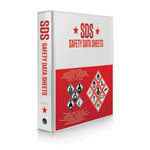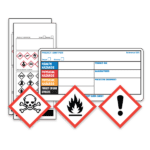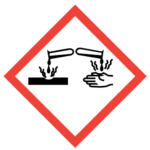I spend much of my day writing Safety Data Sheets (SDS) for customers, many of which are knowledgeable on the requirements, but don’t always understand that GHS (OSHA HazCom 2012 or WHMIS) is a hazard-based system.
One of the premises that was introduced with the Globally Harmonized System (GHS) was the term “hazard” in place of “risk.” This was also changed in the transportation regulations, including 49CFR, TDGR, IATA/ICAO and IMDG a few years ago.
“There is only 5% of chemical X in my formulation, how could it possibly have a corrosive pictogram” my customer would say. Pre-GHS, using the risk-based system, perhaps it could have been classified as an irritant. However, with a hazard-based system, it is based on classification and cut-off values.
According to CCOHS:
A hazard is any source of potential damage, harm or adverse health effects on something or someone.
Basically, a hazard is the potential for harm or an adverse effect (for example, to people as health effects, to organizations as property or equipment losses, or to the environment).
Risk is the chance or probability that a person will be harmed or experience an adverse health effect if exposed to a hazard. It may also apply to situations with property or equipment loss, or harmful effects on the environment.
For example: the risk of developing cancer from smoking cigarettes could be expressed as: cigarette smokers are 12 times (for example) more likely to die of lung cancer than non-smokers.
Let’s look at an example:
Product is a degreaser (surfactant). Marketed as a natural cleaning agent.
It has 3.1% of an ingredient that has a classification of Eye Damage, due the irreversible damage it causes.
Under GHS (OSHA/WHMIS) Eye Damage is based on ≥3% of a substance classified as Eye Damage. Therefore, if there is 3.1% of the substance in the mixture, it meets the criteria. It does not matter if the risk to the user is minimal, if the product is considered “safe”, “natural” or a “chemical alternative”.
Like it or not, the Classification for this product is Eye Damage, Category 1
Need help understanding your classification? Contact one of our Regulatory Experts for assistance.
Stay up to date and sign up for our newsletter!
We have all the products, services and training you need to ensure your staff is properly trained and informed.
 Safety Data Sheet (SDS) Services |
 GHS Labels |
 GHS within WHMIS Training Course |







